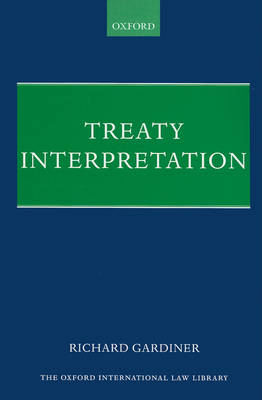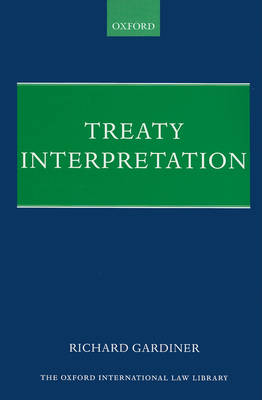
En raison d'une grêve chez bpost, votre commande pourrait être retardée. Vous avez besoin d’un livre rapidement ? Nos magasins vous accueillent à bras ouverts !
- Retrait gratuit dans votre magasin Club
- 7.000.000 titres dans notre catalogue
- Payer en toute sécurité
- Toujours un magasin près de chez vous
En raison de la grêve chez bpost, votre commande pourrait être retardée. Vous avez besoin d’un livre rapidement ? Nos magasins vous accueillent à bras ouverts !
- Retrait gratuit dans votre magasin Club
- 7.000.0000 titres dans notre catalogue
- Payer en toute sécurité
- Toujours un magasin près de chez vous
Description
This book explains the rules for interpretation of treaties and gives examples of their application in national and international jurisdictions. The rules of treaty interpretation codified in the Vienna Convention on the Law of Treaties now apply to virtually all treaties which may be encountered in an international context and also within national legal systems where treaties have an impact on a large and growing range of matters. The rules of treaty interpretation differ somewhat from typical rules for interpreting legal instruments and legislation within national legal systems. Lawyers, and also some administrators, diplomats, and officials at international organizations, are increasingly likely to encounter issues of treaty interpretation which require not only knowledge of the relevant rules of interpretation, but also how these rules have been, and are to be, applied in practice. Now that the codified rules of treaty interpretation have been in force for some twenty-five years, there is a considerable body of case law on their application. This case law, combined with the history and analysis of the rules of treaty interpretation, provides a basis for understanding this most important task in the application of treaties internationally and within national systems of law. Any lawyer who ever has to consider international matters, and increasingly any lawyer whose work involves domestic legislation with any international connection, is at risk nowadays of encountering a treaty provision which requires interpretation, whether the treaty provision is explicitly in issue or is the source of the relevant domestic legislation. This book provides a guide to interpreting treaties properly in accordance with the modern rules.
Spécifications
Parties prenantes
- Auteur(s) :
- Editeur:
Contenu
- Nombre de pages :
- 480
- Langue:
- Anglais
Caractéristiques
- EAN:
- 9780199597048
- Date de parution :
- 19-11-10
- Format:
- Livre broché
- Format numérique:
- Trade paperback (VS)
- Dimensions :
- 155 mm x 231 mm
- Poids :
- 739 g

Les avis
Nous publions uniquement les avis qui respectent les conditions requises. Consultez nos conditions pour les avis.






